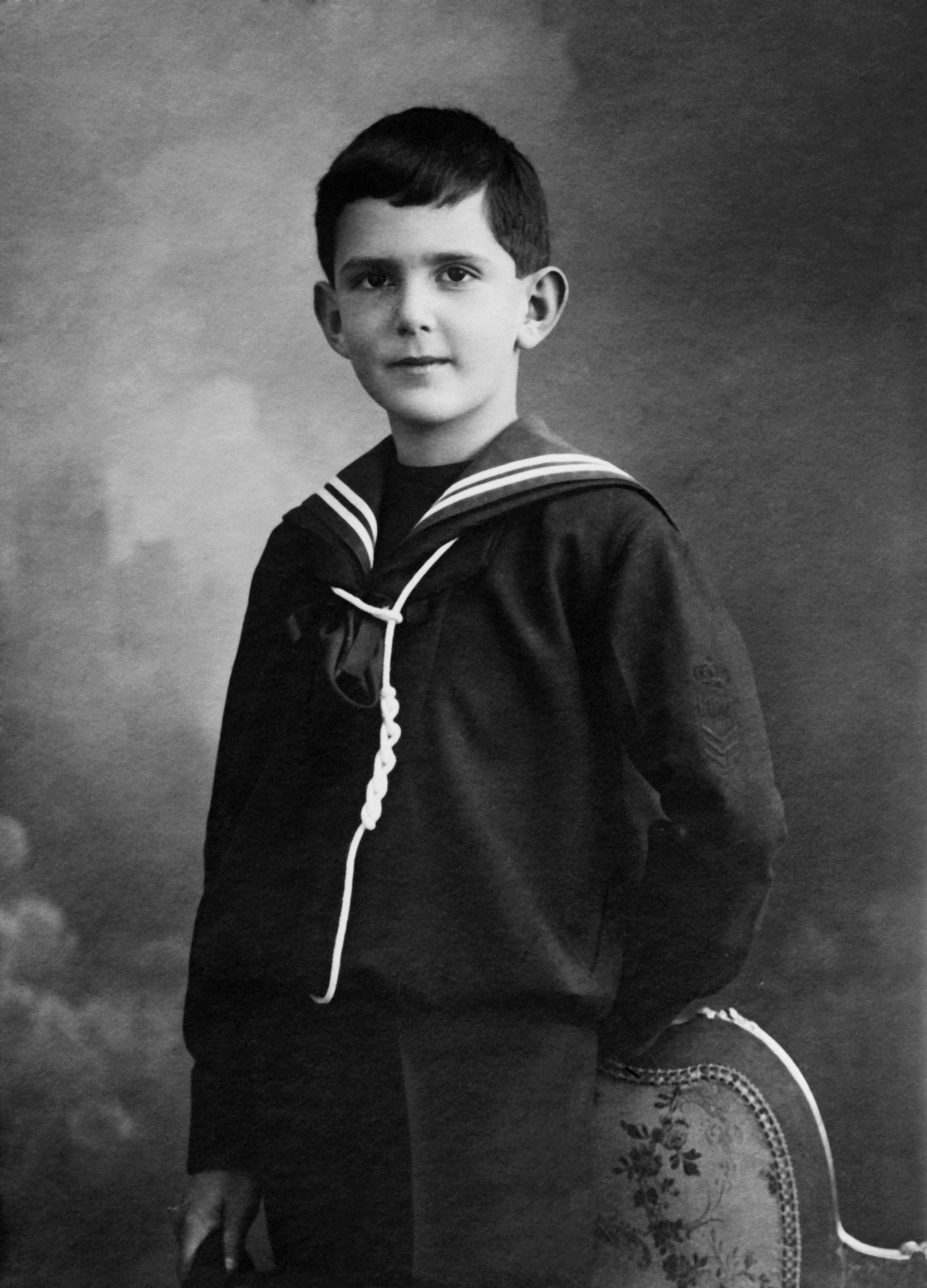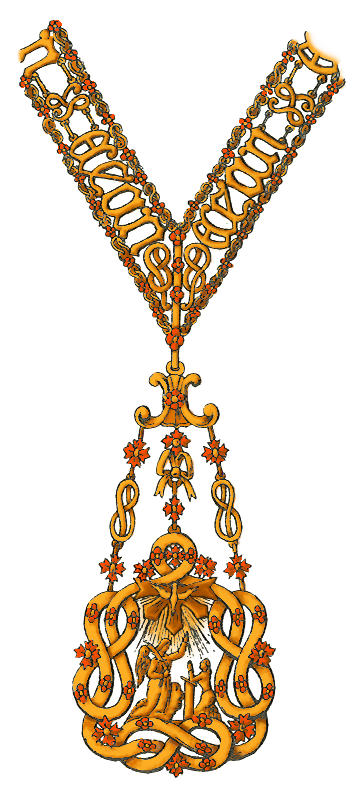|
House Order
A dynastic order, monarchical order, or house order is an order under royal patronage. Such an order is bestowed by, as a legitimate , a sovereign or the head of a once-sovereign ruling family. These are often considered part of the cultural patrimony of the ruling family. Dynastic orders were often founded or maintained to reward service to a monarch or their subsequent dynasty. A national or state order is the equivalent term for orders (e.g., of merit) conferred by sovereign states but not bestowed by ruling dynasties. In personal gift of sovereign Dynastic orders are under the exclusive control of a monarch and are bestowed without the advice of the political leadership (prime minister or cabinet). A recent report by the British Government mentioned that there is "one remaining exercise that has been identified of the Monarch's truly personal, executive prerogative: that is, the conferment of certain honours that remain within he Sovereign’sgift (the Orders of Merit, ... [...More Info...] [...Related Items...] OR: [Wikipedia] [Google] [Baidu] |
Order (distinction)
An order is a visible honour awarded by a sovereign state, monarch, dynastic house or organisation to a person, typically in recognition of individual merit, that often comes with distinctive insignia such as collars, medals, badges, and sashes worn by recipients. Modern honour systems of state orders and dynastic orders emerged from the culture of orders of chivalry of the Middle Ages, which in turn emerged from the Catholic religious orders. Terminology The word order ( la, ordo), in the case referred to in this article, can be traced back to the chivalric orders, including the military orders, which in turn trace the name of their organisation back to that of the Catholic religious orders. Orders began to be created ''ad hoc'' and in a more courtly nature. Some were merely honorary and gradually the ''badges'' of these orders (i.e. the association) began to be known informally as ''orders''. As a result, the modern distinction between ''orders'' and ''decorations'' or ' ... [...More Info...] [...Related Items...] OR: [Wikipedia] [Google] [Baidu] |
Manuel II Of Portugal
'' Dom'' Manuel II (15 November 1889 – 2 July 1932), "the Patriot" ( pt, "o Patriota") or "the Unfortunate" (), was the last King of Portugal, ascending the throne after the assassination of his father, King Carlos I, and his elder brother, Luís Filipe, the Prince Royal. Before ascending the throne he held the title of Duke of Beja. His reign ended with the fall of the monarchy during the 5 October 1910 revolution, and Manuel lived the rest of his life in exile in Twickenham, Middlesex, England. Early life ''Manuel Maria Filipe Carlos Amélio Luís Miguel Rafael Gabriel Gonzaga Francisco de Assis Eugénio de Saxe-Coburgo-Gota e Bragança'' was born in the Palace of Belém, Lisbon, less than a month after his father King Carlos I ascended the Portuguese throne. He was the third child and second son of Carlos and Amélie of Orléans. A member of the House of Braganza,"While remaining patrilineal dynasts of the duchy of Saxe-Coburg and Gotha according to pp. 88, 116 ... [...More Info...] [...Related Items...] OR: [Wikipedia] [Google] [Baidu] |
Vittorio Emanuele, Prince Of Naples
, house = Savoy , spouse = , issue = Prince Emanuele Filiberto, Prince of Venice , father = Umberto II of Italy , mother = Princess Marie-José of Belgium , birth_date = , birth_place = Naples, Kingdom of Italy , death_date = , death_place = Prince Vittorio Emanuele of Savoy, Prince of Naples (''Vittorio Emanuele Alberto Carlo Teodoro Umberto Bonifacio Amedeo Damiano Bernardino Gennaro Maria di Savoia'';''Genealogisches Handbuch des Adels, Fürstliche Häuser'' XIV. "Haus Italien". C.A. Starke Verlag, 1997, pp. 33, 38–39. .Willis, Daniel, ''The Descendants of Louis XIII'', Clearfield Co., Inc., Baltimore, Maryland, 1999, p. 673. . born 12 February 1937) is the only son of Umberto II, the last King of Italy, and his wife Marie-José of Belgium. Vittorio Emanuele also uses the title Duke of Savoy and claims the headship of the House of Savoy. These claims were disputed by supporters of his third cousin, Prince Aimone, 6th Duke ... [...More Info...] [...Related Items...] OR: [Wikipedia] [Google] [Baidu] |
Umberto II Of Italy
en, Albert Nicholas Thomas John Maria of Savoy , house = Savoy , father = Victor Emmanuel III of Italy , mother = Princess Elena of Montenegro , birth_date = , birth_place = Racconigi, Piedmont, Kingdom of Italy , death_date = , death_place = Geneva, Switzerland , burial_place = Hautecombe Abbey, France , religion = Roman Catholicism , signature = UmbertoII.signature.png , signature_alt = Umberto II of Italy signature Umberto II, full name Umberto Nicola Tommaso Giovanni Maria di Savoia (15 September 190418 March 1983), was the last King of Italy. He reigned for 34 days, from 9 May 1946 to 12 June 1946, although he had been ''de facto'' head of state since 1944 and was nicknamed the May King ( it, Re di Maggio). Umberto was the only son among the five children of King Victor Emmanuel III and Queen Elena. In an effort to repair the monarchy's image after the fall of Benito Mussolini's regime, Victor Emmanuel transferred his power ... [...More Info...] [...Related Items...] OR: [Wikipedia] [Google] [Baidu] |
Knight
A knight is a person granted an honorary title of knighthood by a head of state (including the Pope) or representative for service to the monarch, the church or the country, especially in a military capacity. Knighthood finds origins in the Greek '' hippeis'' and '' hoplite'' (ἱππεῖς) and Roman ''eques'' and '' centurion'' of classical antiquity. In the Early Middle Ages in Europe, knighthood was conferred upon mounted warriors. During the High Middle Ages, knighthood was considered a class of lower nobility. By the Late Middle Ages, the rank had become associated with the ideals of chivalry, a code of conduct for the perfect courtly Christian warrior. Often, a knight was a vassal who served as an elite fighter or a bodyguard for a lord, with payment in the form of land holdings. The lords trusted the knights, who were skilled in battle on horseback. Knighthood in the Middle Ages was closely linked with horsemanship (and especially the joust) from its origins ... [...More Info...] [...Related Items...] OR: [Wikipedia] [Google] [Baidu] |
Order Of The Crown Of Italy
The Order of the Crown of Italy ( it, Ordine della Corona d'Italia, italic=no or OCI) was founded as a national order in 1868 by King Victor Emmanuel II of Italy, Vittorio Emanuele II, to commemorate Italian unification, the unification of Italy in 1861. It was awarded in five degrees for civilian and military merit. Today the Order of the Crown has been replaced by the Order of Merit of Savoy and is still conferred on new knights by the current head of the house of Vittorio Emanuele, Prince of Naples. Compared with the older Order of Saints Maurice and Lazarus (1572), the Order of the Crown of Italy was awarded more liberally and could be conferred on non-Catholics as well; eventually, it became a requirement for a person to have already received the Order of the Crown of Italy in at least the same degree before receiving the Order of Saints Maurice and Lazarus. The order has been suppressed by law since the birth of the Italian Republic, foundation of the Republic in 1946. How ... [...More Info...] [...Related Items...] OR: [Wikipedia] [Google] [Baidu] |
Supreme Order Of The Most Holy Annunciation
The Supreme Order of the Most Holy Annunciation ( it, Ordine Supremo della Santissima Annunziata) is a Roman Catholic order of chivalry, originating in Duchy of Savoy, Savoy. It eventually was the pinnacle of the List of Italian orders of knighthood#Kingdom of Italy, honours system in the Kingdom of Italy, which ceased to be a Order (honour), national order when the kingdom Italian institutional referendum, 1946, became a republic in 1946. Today, the order continues as a dynastic order of knighthood, dynastic order under the jurisdiction of the Head of the House of Savoy. History and statutes The Supreme Order of the Most Holy Annunciation originated in 1362, when Amadeus VI of Savoy, Amadeus VI, Count of Savoy (1343-1383) instituted the order's earliest designation, under the title of Order of the Collar.''Syr Gawayn and the Grene Knyzt-(Concluded)'', J. R. Hulbert, Modern Philology, Vol. 13, No. 12 (Apr., 1916), 140. The order was dedicated to the Blessed Virgin Mary, who is ce ... [...More Info...] [...Related Items...] OR: [Wikipedia] [Google] [Baidu] |
Kingdom Of Italy (1861–1946)
The Kingdom of Italy ( it, Regno d'Italia) was a state that existed from 1861, when Victor Emmanuel II of Kingdom of Sardinia, Sardinia was proclamation of the Kingdom of Italy, proclaimed King of Italy, until 1946, when civil discontent led to an 1946 Italian institutional referendum, institutional referendum to abandon the monarchy and form the modern Italy, Italian Republic. The state resulted from a decades-long process, the ''Italian unification, Risorgimento'', of consolidating the different states of the Italian Peninsula into a single state. That process was influenced by the House of Savoy, Savoy-led Kingdom of Sardinia, which can be considered Italy's legal Succession of states, predecessor state. Italy Third Italian War of Independence, declared war on Austrian Empire, Austria in alliance with Kingdom of Prussia, Prussia in 1866 and received the region of Veneto following their victory. Italian troops Capture of Rome, entered Rome in 1870, ending Papal States, more tha ... [...More Info...] [...Related Items...] OR: [Wikipedia] [Google] [Baidu] |
House Of Savoy
The House of Savoy ( it, Casa Savoia) was a royal dynasty that was established in 1003 in the historical Savoy region. Through gradual expansion, the family grew in power from ruling a small Alpine county north-west of Italy to absolute rule of the Kingdom of Sicily from 1713 to 1720, when they were handed the island of Sardinia, over which they would exercise direct rule from then onward. Through its junior branch of Savoy-Carignano, the House of Savoy led the Italian unification in 1860 and ruled the Kingdom of Italy until 1946; they also briefly ruled the Kingdom of Spain in the 19th century. The Savoyard kings of Italy were Victor Emmanuel II, Umberto I, Victor Emmanuel III, and Umberto II. The last monarch reigned for a few weeks before being deposed following the institutional referendum of 1946, after which the Italian Republic was proclaimed. History The name derives from the historical region of Savoy in the Alpine region between what is now France and Italy. Ove ... [...More Info...] [...Related Items...] OR: [Wikipedia] [Google] [Baidu] |
Gregory XII
Pope Gregory XII ( la, Gregorius XII; it, Gregorio XII; – 18 October 1417), born Angelo Corraro, Corario," or Correr, was head of the Catholic Church from 30 November 1406 to 4 July 1415. Reigning during the Western Schism, he was opposed by the Avignon claimant Benedict XIII and the Pisan claimants Alexander V and John XXIII. Gregory XII wanted to unify the Church and voluntarily resigned in 1415 to end the Schism. Early life Angelo Corraro was born in Venice of a noble family, about 1327, and was appointed Bishop of Castello in 1380, succeeding Bishop Nicolò Morosini.Ott, Michael. "Pope Gregory XII." The Catholic Encyclopedia Vol. 7. New York: Robert Appleton Company, 1910. 30 December 2015 On 1 December 1390 he was made titular |
Pope
The pope ( la, papa, from el, πάππας, translit=pappas, 'father'), also known as supreme pontiff ( or ), Roman pontiff () or sovereign pontiff, is the bishop of Rome (or historically the patriarch of Rome), head of the worldwide Catholic Church, and has also served as the head of state or sovereign of the Papal States and later the Vatican City State since the eighth century. From a Catholic viewpoint, the primacy of the bishop of Rome is largely derived from his role as the apostolic successor to Saint Peter, to whom Petrine primacy, primacy was conferred by Jesus, who gave Peter the Keys of Heaven and the powers of "binding and loosing", naming him as the "rock" upon which the Church would be built. The current pope is Pope Francis, Francis, who was 2013 papal conclave, elected on 13 March 2013. While his office is called the papacy, the ecclesiastical jurisdiction, jurisdiction of the episcopal see is called the Holy See. It is the Holy See that is the sovereign enti ... [...More Info...] [...Related Items...] OR: [Wikipedia] [Google] [Baidu] |
Order Of Saints Maurice And Lazarus
The Order of Saints Maurice and Lazarus ( it, Ordine dei Santi Maurizio e Lazzaro) (abbreviated OSSML) is a Roman Catholic dynastic order of knighthood bestowed by the royal House of Savoy. It is the second-oldest order of knighthood in the world, tracing its lineage to AD 1098, and it is one of the rare orders of knighthood recognized by papal bull, in this case by Pope Gregory XIII. In that bull, Pope Gregory XIII bestowed upon Emmanuel Philibert, Duke of Savoy and his Savoy successors, the right to confer this knighthood in perpetuity. The Grand Master is, Vittorio Emanuele, Prince of Naples, also known as the Duke of Savoy, the eldest son of the last King of Italy, Umberto II of Italy. However Vittorio Emanuele's cousin once removed Prince Aimone, Duke of Aosta claims to be grand master as his father claimed to be head of the house of Savoy. The order was formerly awarded by the Kingdom of Italy (1861–1946) with the heads of the House of Savoy as the Kings of It ... [...More Info...] [...Related Items...] OR: [Wikipedia] [Google] [Baidu] |







